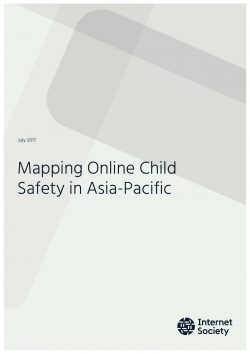Executive Summary
In today’s age, the Internet has become essential for developing and strengthening the capacities of children. But at the same time, use of the Internet can come with some risks for young Internet users. It can create new challenges with regards to their safety and protection – both in the physical and virtual worlds. However, quick-fix interventions that limit children’s online access tend to result in a loss of opportunity for them to take advantage of the benefits of the Internet.
There is limited research on child online safety in Asia-Pacific –this report outlines some of the resources that are currently available. It provides an overview of initiatives, focusing on policies that are in place to tackle child online safety in selected economies in the region, and an introduction to the different actors involved in addressing the various risks that children can face online. Based on an analysis of these findings, emerging priority issues are identified and some policy recommendations are proposed.
To frame the analysis, this study divides Asia-Pacific economies into three clusters by Internet penetration level (high, moderate and low), which generally has a positive correlation with the income level of an economy, i.e. a high-income economy tends to have higher Internet penetration. Eleven economies have been selected based on the ease of obtaining data and information on child online safety. The study is based on secondary research online, by using key search terms related to child online protection.
Findings
The study found that all selected economies are working to protect children from online sexual abuse and exploitation. Regardless of their level of Internet penetration, all criminalise the production and distribution of child pornography under domestic law.
However, the quality of legislation—when present–vary. Relevant laws in economies with high Internet penetration tend to have a clear and consistent definition of “child” and “child pornography”, and include offenses facilitated by all Internet-enabled platforms.
Economies with high Internet penetration have also enacted laws and developed interventions on other aspects of child online safety, such as children’s exposure to harmful content, cyberbullying and Internet addiction. But there does not seem to be any targeted legislative response to the online privacy of children and the protection of children from information security risks. Moreover, comprehensive measures to equip children with the knowledge, tools and skills necessary for them to manage these risks are still lacking, particularly in developing countries in the region.
Recently, in Australia, New Zealand, the Philippines and Singapore, laws have been passed to protect children against cyberbullying. These laws are being criticised for criminalising children and being inconsistent with the right to freedom of expression. Some believe that it is more effective to tackle cyberbullying through awareness-raising and education programmes with parents, guardians, schools and young people themselves.
It must be emphasised that drafting and implementing legislation are only one among the many steps that can be taken by governments. The study found that countries have used a mix of measures to address these concerns, including technical tools to filter content, end-user empowerment, and cooperation between multiple stakeholders, including children.
The number of measures, policies and programmes in place suggest that economies with high Internet penetration are actively working to address child online safety issues. Most of the actors are from the public sector, but many of the initiatives involve public-private-civil society partnerships. As these are generally high-income economies, the public sector tends to be better resourced to lead and coordinate child online safety issues.
Emerging economies included in this report, which tend to have moderate Internet penetration, typically do not have as much resources at their disposal. In these countries, the public sector has taken initiatives to address child online safety issues, albeit less rigorously than those with high Internet penetration. But non-governmental organisations are stepping up to fill any gaps. It is worth noting that many of the initiatives are public-private-civil society partnerships. UNICEF has likewise been working in these countries to address child online safety, mainly to support research that will guide policymaking and help raise awareness on the issues.
Generally, there is limited English-language information on the child online safety initiatives of economies with low Internet penetration. Information on India was drawn largely from a recent UNICEF study. India, when compared with economies of moderate and high Internet penetration has weaker legislation, and actors are less coordinated in tackling child online safety issues.
Policy Recommendations
Based on the study, the following policy recommendations are proposed:
- In domestic laws, clearly define terms based on international legal standards and include offenses facilitated by all Internet-enabled platforms. Harmonisation of terminology used is critical.
- Ensure that policies to protect children online are consistent with other important policy objectives, such as the preservation of fundamental rights, including privacy and freedom of expression.
- Collaborate among relevant ministries, agencies and institutions, adopt a multi-stakeholder approach, and ensure international cooperation.
- Make digital citizenship a priority in online child protection policies. Digital skills, including safety online, must be taught from the earliest stage possible. In practice, for today’s environment, this means from early primary (or elementary) school age.
- Develop a coordinated strategy for awareness-raising and education on child online safety for different actors. This includes engaging with and empowering parents, guardians, teachers and other authority figures with whom young people regularly interact.
- Strengthen the child protection and technological capacity of law enforcement agencies.
- Engage with children to develop robust research on child online safety and integrate findings in child protection systems.
- Develop consistent indicators to assess and monitor child online safety.
